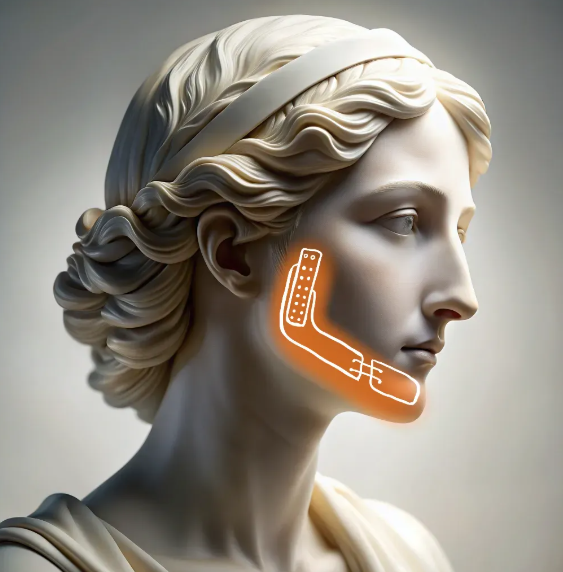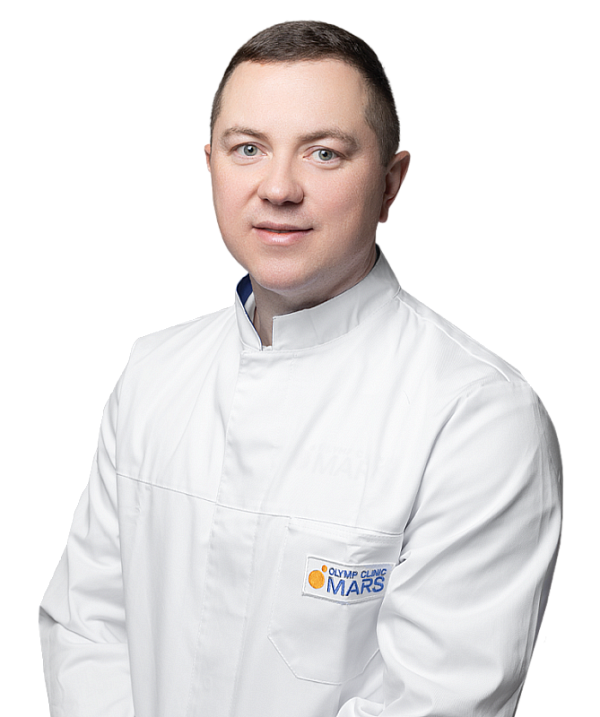Cheekbone reduction and osteosynthesis
Surgical restoration of the zygomatic bone using titanium plates to fix the fragments.

Zygoma fractures frequently result in displacement of bone fragments and disruption to the anatomy of the facial skeleton. Injuries can be caused by blows, falls, and car accidents. They are often accompanied by other bone fractures, particularly in the upper jaw, eye socket, and nose.
In cases where the fractures do not align properly, patients may experience cosmetic and functional complications, including facial asymmetry, double vision, restricted lower jaw mobility, and bite dysfunction. In order to restore the form and function of the facial skeleton in such cases, surgical intervention is performed. This intervention involves repositioning and osteosynthesis of the zygomatic bone.
A comprehensive examination is performed before the procedure. This includes a CT or X-ray of the facial skull, clinical and biochemical blood tests, a coagulogram, infection tests, an ECG, and a general urine analysis. The patient will also consult with a general practitioner and an anesthesiologist.
The surgeon will make minimal external or intraoral incisions to gain access to the fracture site. The fragments are accurately matched and secured with titanium miniplates and screws. If necessary, foreign bodies are removed, soft tissues are freed from interposition, and the anatomy of the ocular wall is restored.
We use titanium miniplates, microscrews and high-precision surgical instruments.
The patient remains in the hospital for 1 to 3 days. The following day, a postoperative CT scan is performed. In the initial few days, it is advised to prioritize rest, cooling the cheekbone area, and taking anti-inflammatory and antibacterial medications. For 7 to 10 days, the patient should refrain from active mimic movements, chewing, head tilts, and physical activity. It is also recommended to avoid baths, saunas, swimming pools, contact sports, and overheating for the next month. Full function and tissue recovery takes 3-6 weeks.
Benefits
Precise anatomical reduction
Correct facial relief is formed and the eye socket and cheekbone arch contours are restored.
Minimal cosmetic defect
Microincisions are located in natural skin folds or in the oral cavity, scarring is virtually invisible.
Stable fixation
Titanium miniplates provide strong fixation even in complex fractures.
Quick recovery
Inpatient treatment and rehabilitation time is shortened due to the minimal trauma.
Врачи
Смотреть всех врачейMaxillofacial surgeon. Candidate of Medical Sciences.
Similar referral activities
Post-traumatic facial deformities treatment
Surgical restoration of facial bones and soft tissues after trauma to restore function and appearance.
Maxillofacial purulent inflammations diagnostics and dissection
Surgical treatment of abscesses, phlegmons, and other acute inflammations with drainage and sanitation.
Naso-orbital reduction and osteosynthesis
Facial skeleton restoration surgery involving nose and eye socket fractures.
Lower jaw osteosynthesis
A surgical procedure designed to repair broken bones in cases of mandibular fractures.
Intermaxillary fixation with screws
Temporary jaw stabilization in fractures and postoperative care.

